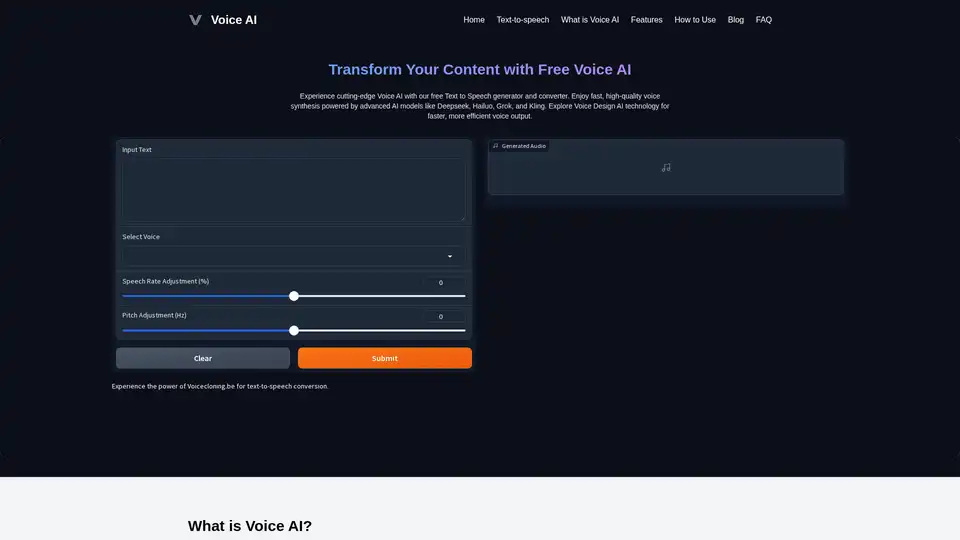
Voice AI
Overview of Voice AI
What is Voice AI?
Voice AI represents a revolutionary leap in voice synthesis technology, blending artificial intelligence with advanced machine learning to produce highly natural and expressive speech from text inputs. Unlike conventional text-to-speech (TTS) systems that often sound robotic, Voice AI leverages cutting-edge models to mimic human-like intonations, emotions, and speech patterns. At its core, this platform—powered by leading AI innovations such as Deepseek AI, Hailuo AI, Grok, and Kling—offers a free Text to Speech generator and converter designed for creators, developers, and businesses seeking efficient, high-quality audio solutions.
This tool transforms written content into lifelike audio, making it ideal for a wide range of uses from content creation to accessibility enhancements. By supporting multiple AI models, Voice AI ensures versatility, allowing users to select the best fit for their project while benefiting from constant updates that incorporate the latest advancements in large language models (LLMs). Whether you're producing audiobooks or integrating voices into apps, Voice AI delivers precision and scalability without the need for expensive hardware or complex setups.
How Does Voice AI Work?
The underlying technology of Voice AI relies on sophisticated natural language processing (NLP) and neural networks to analyze text and generate audio outputs. Here's a breakdown of its work principle:
Input Analysis: The system uses advanced NLP algorithms to parse the text, understanding context, nuances, and even implied emotions. This step ensures the output isn't just literal but contextually rich.
Model Selection and Synthesis: Users choose from supported AI models like Deepseek for depth in emotional conveyance, Hailuo for nuanced accents, Grok for versatile applications, or Kling for high-fidelity realism. These models employ deep learning techniques, trained on vast datasets of human speech, to synthesize waves that replicate natural prosody—rhythm, stress, and intonation.
Customization Layer: Before final generation, the tool allows adjustments to parameters such as pitch, speed, and emotional tone. Voice cloning adds another layer, where users upload a sample recording to create a personalized voice, effectively replicating a specific speaker's timbre and style.
Real-Time Output: Processing occurs swiftly, often in real-time, making it suitable for interactive scenarios like virtual assistants. The result is an audio file or API-integrated stream that sounds remarkably human.
This process not only speeds up voice generation but also reduces errors common in older TTS systems, such as unnatural pauses or mispronunciations. For instance, emotion recognition features detect sentiment in the text—like excitement in a product description—and infuses it into the speech, enhancing engagement.
Core Features of Voice AI
Voice AI stands out with a suite of features tailored for modern digital workflows. Key highlights include:
Multiple AI Model Support: Access a variety of models (Deepseek, Hailuo, Grok, Kling) for diverse voice outputs, each optimized for specific strengths like speed or emotional depth.
Natural Language Processing: Deep contextual understanding ensures speech that flows conversationally, avoiding the stiffness of basic TTS.
Emotion Recognition and Conveyance: Infuse joy, sadness, or urgency into voices, perfect for storytelling or customer interactions.
Multi-Language and Accent Support: Generate speech in numerous languages and dialects, broadening global reach for e-learning or international marketing.
Voice Cloning: Upload a short audio sample to clone custom voices, enabling personalized narrations without hiring voice actors.
Real-Time Processing: Lightning-fast conversion suits live applications, with minimal latency for seamless user experiences.
Customizable Parameters: Fine-tune pitch, speed, volume, and more via an intuitive interface, ensuring outputs match your vision.
These features are backed by ongoing updates, keeping the platform at the forefront of AI voice technology. Users appreciate the free tier's robustness, which rivals paid alternatives in quality.
How to Use Voice AI: Step-by-Step Guide
Getting started with Voice AI is straightforward, even for beginners. Follow these steps to convert text to speech effortlessly:
Sign Up: Visit the platform and create a free account— no credit card required.
Select a Voice: Browse the library of pre-built AI-generated voices or opt for cloning by uploading a sample.
Input Text: Type or paste your content into the clean, user-friendly editor.
Customize: Tweak settings like speed for a podcast pace or emotion for dramatic effect.
Generate: Hit the 'Generate' button to produce the audio in seconds.
Download or Integrate: Save the MP3/WAV file or connect via API for direct app embedding.
For developers, the API documentation provides endpoints for batch processing or real-time streaming, with sample code in popular languages like Python and JavaScript. This ease of use democratizes high-end voice tech, allowing quick experimentation without steep learning curves.
Primary Use Cases and Applications
Voice AI excels in scenarios where engaging audio elevates content or functionality. Common applications include:
Audiobooks and Podcasts: Turn scripts into professional narrations, saving time and costs for independent creators.
Virtual Assistants and Chatbots: Power conversational AI with natural responses, improving user satisfaction in customer service bots.
E-Learning Platforms: Create accessible lectures or interactive modules, supporting diverse languages for global audiences.
Accessibility Tools: Aid visually impaired users by converting documents to speech, promoting inclusivity.
Video Game Voices: Design character dialogues with cloned or customizable tones for immersive gameplay.
Interactive Voice Response (IVR) Systems: Enhance phone menus with expressive prompts, reducing hang-ups in call centers.
In marketing, it's used for voiceovers in ads or social media, where emotional delivery boosts conversion rates. Educational testimonials highlight its role in language learning apps, while businesses praise API integration for scalable IVR solutions.
Practical Value and Why Choose Voice AI
The true value of Voice AI lies in its efficiency and accessibility. As a free tool, it lowers barriers for startups and hobbyists, yet delivers enterprise-grade quality through AI models that rival industry leaders. Cost savings are evident: no need for voice talent fees or studio time—generate unlimited outputs on the fly.
From an SEO perspective, incorporating AI-generated audio improves site engagement metrics, as users spend more time listening to content. For developers, the platform's scalability supports high-volume needs without performance dips. User feedback often cites the emotional expressiveness as a game-changer, making outputs feel authentic and relatable.
Compared to traditional TTS, Voice AI's differences are stark: it handles nuances like sarcasm or enthusiasm, multi-model flexibility avoids one-size-fits-all limitations, and voice cloning personalizes at scale. Security is prioritized, with data processed securely and no storage of sensitive uploads without consent.
Who is Voice AI For?
This tool caters to a broad audience:
Content Creators: Podcasters, YouTubers, and authors needing quick, polished voiceovers.
Developers and Tech Teams: Building apps, games, or bots requiring seamless voice integration.
Educators and Trainers: Designing courses or accessibility features for diverse learners.
Businesses: From marketing pros optimizing ads to support teams enhancing IVR.
Accessibility Advocates: Non-profits or individuals focused on inclusive tech.
Even non-technical users find it approachable, with intuitive controls that don't require coding knowledge.
Best Ways to Maximize Voice AI
To get the most out of it, start with short texts for testing, experiment with model combinations (e.g., Grok for general use, Kling for creative projects), and leverage API for automation. Regularly check updates for new models like emerging LLMs. For optimal results, provide clear, punctuated input text to enhance NLP accuracy.
In summary, Voice AI isn't just a TTS tool—it's a gateway to innovative audio experiences. By harnessing AI's potential, it empowers users to create compelling, human-like speech that resonates. Whether for personal projects or professional scaling, this platform delivers unmatched value in the evolving world of voice technology.
Best Alternative Tools to "Voice AI"
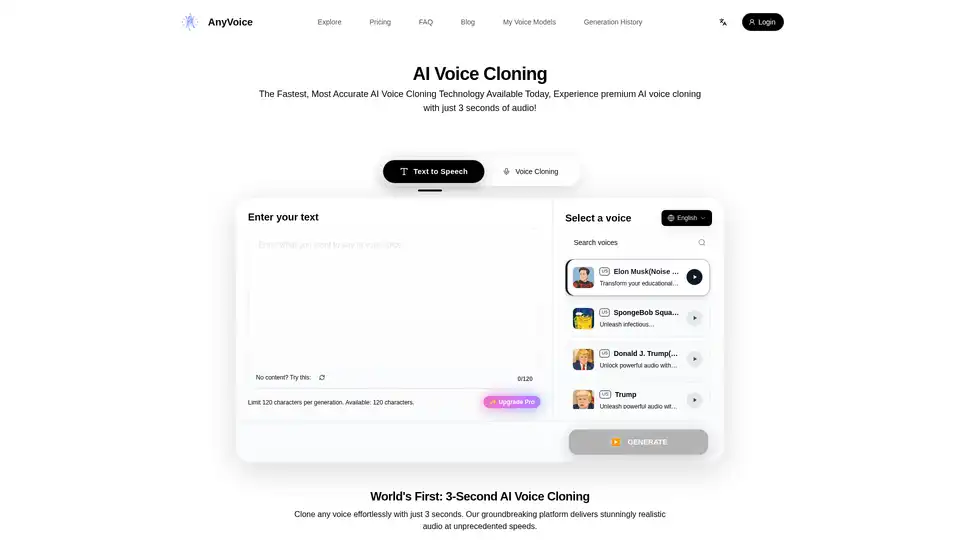
AnyVoice offers the fastest AI voice cloning, requiring only 3 seconds of audio to clone any voice. It supports multiple languages and provides realistic text-to-speech, ideal for content creation and real-time applications.
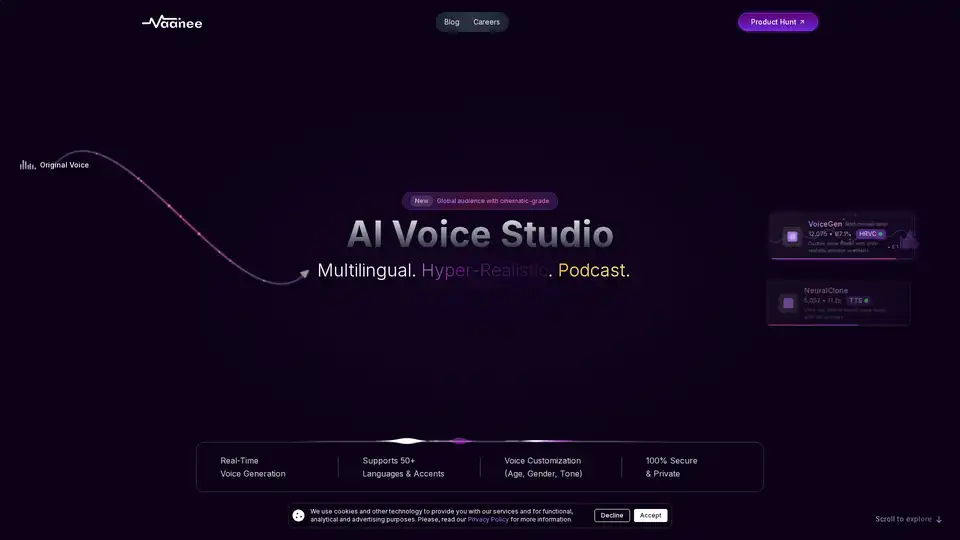
Vaanee AI provides realistic AI voice cloning & generative speech technology for creating natural-sounding voiceovers in multiple languages. Perfect for AI video dubbing, content creation, and more.
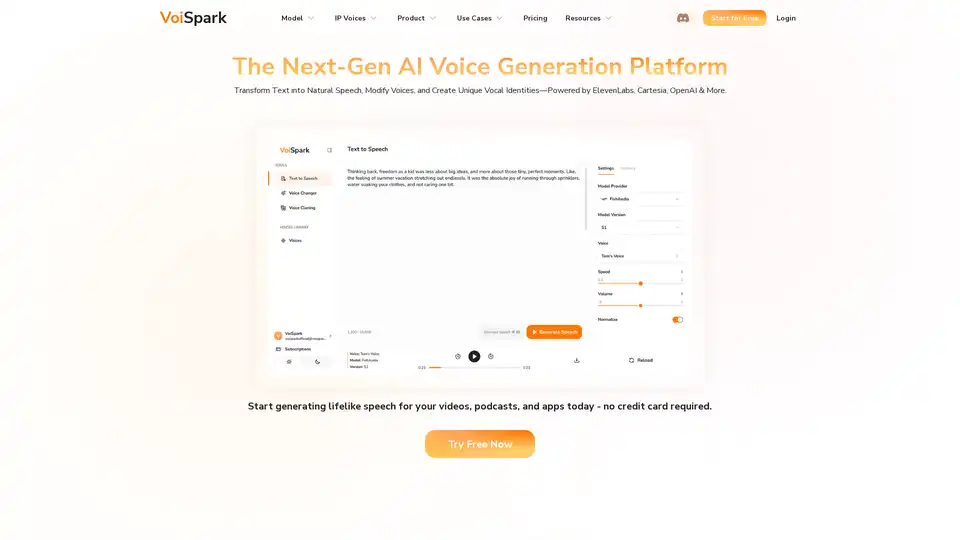
Create realistic AI voices with VoiSpark's platform. Features include text-to-speech, voice cloning, and custom voice design. Start your 100% free trial today!
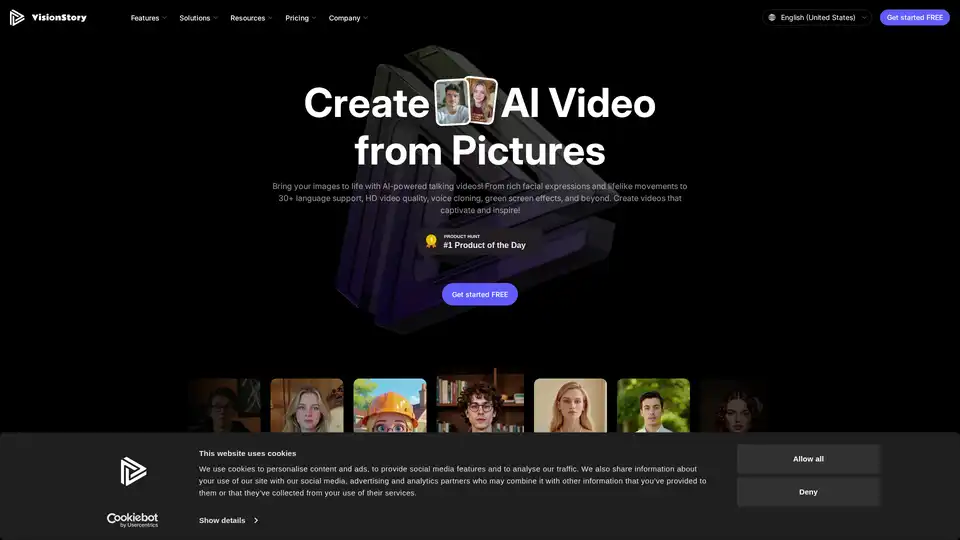
VisionStory is an AI-powered platform that creates talking videos from images. It offers features like emotion control, voice cloning, and green screen effects, making it ideal for content creators, marketers, and educators.
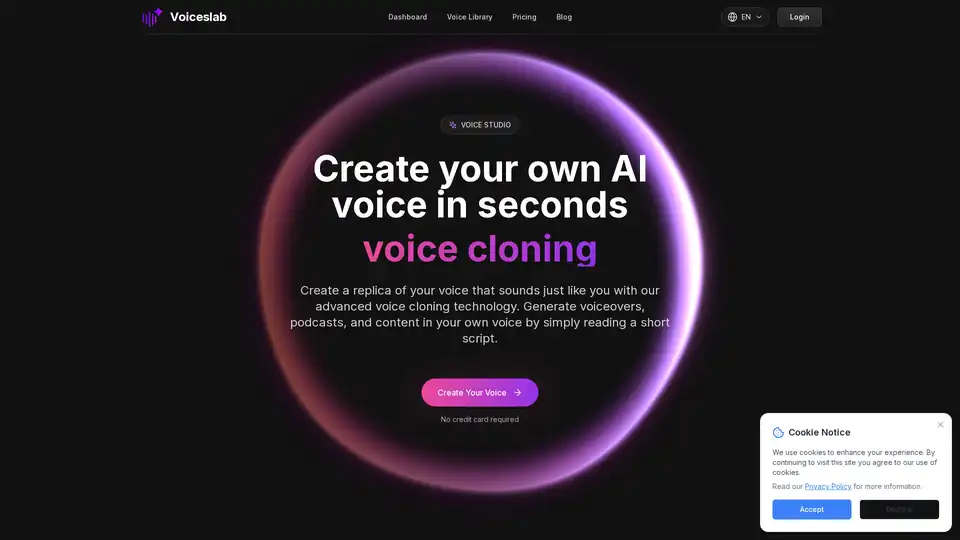
Voiceslab offers instant AI voice cloning to create natural-sounding replicas of your voice for podcasts, videos, and audiobooks. Capture tone, accent, and style with high-quality synthesis supporting 8 languages—no credit card required to start.
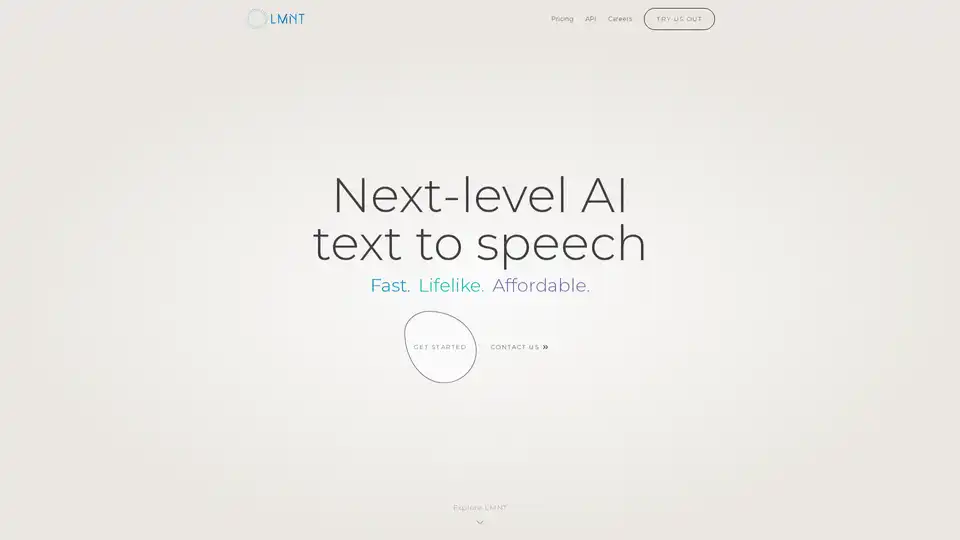
LMNT delivers fast, lifelike, affordable AI speech. Enjoy studio-quality voice clones and low latency streaming ideal for conversational apps, games, and agents. Engineered for reliability, scale effortlessly with technology built by an ex-Google team.
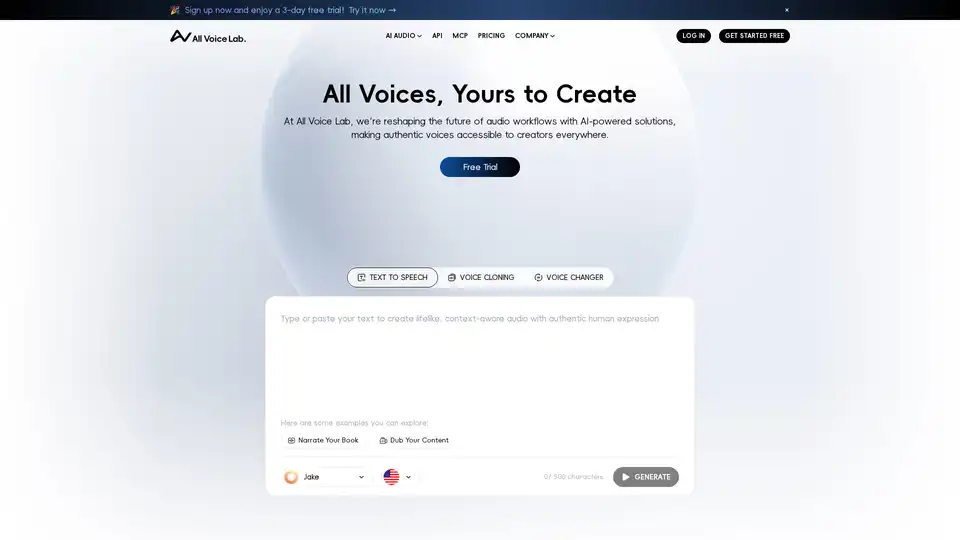
All Voice Lab offers advanced AI text-to-speech, voice cloning, and voice changer tools for realistic, multilingual audio. Create engaging voiceovers with emotional expressiveness—start your free trial today.
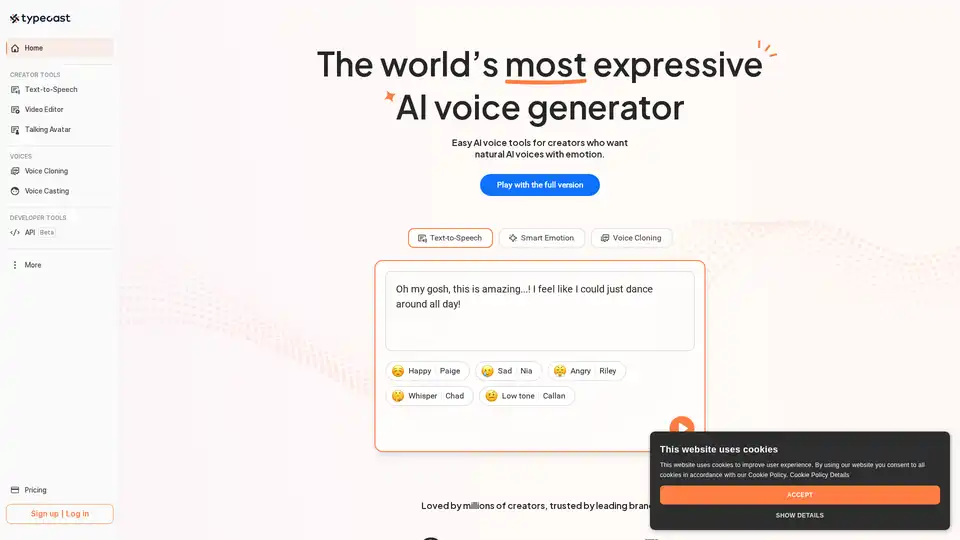
Typecast is an AI voice generator offering 600+ customizable voices, voice cloning, video editing, and talking avatars for content creators.
Transform photos & videos into realistic talking AI avatars instantly. Professional videos with lip-sync in 40+ languages. Start creating for free today!
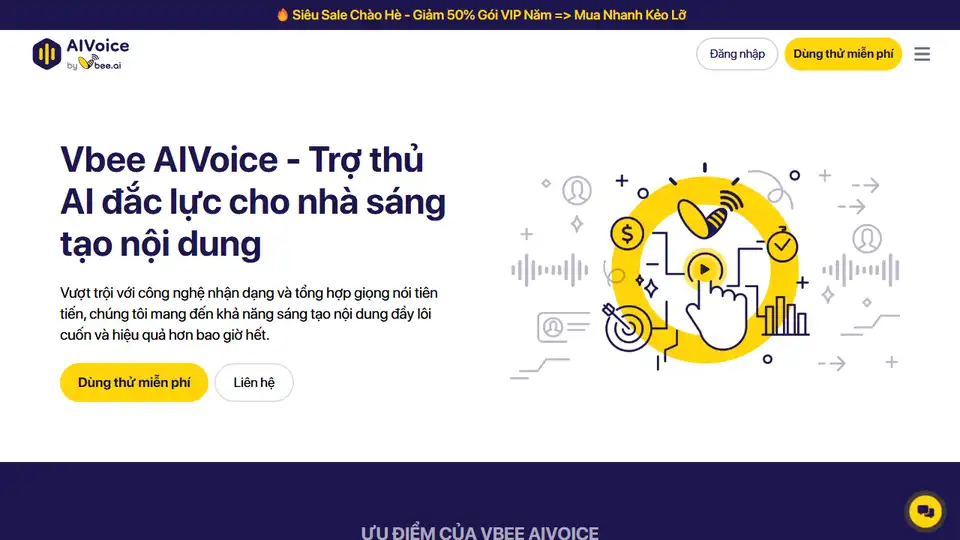
Vbee AIVoice is an AI text-to-speech platform providing natural, emotional voices for content creation and practical applications, saving over 90% on budget and time.
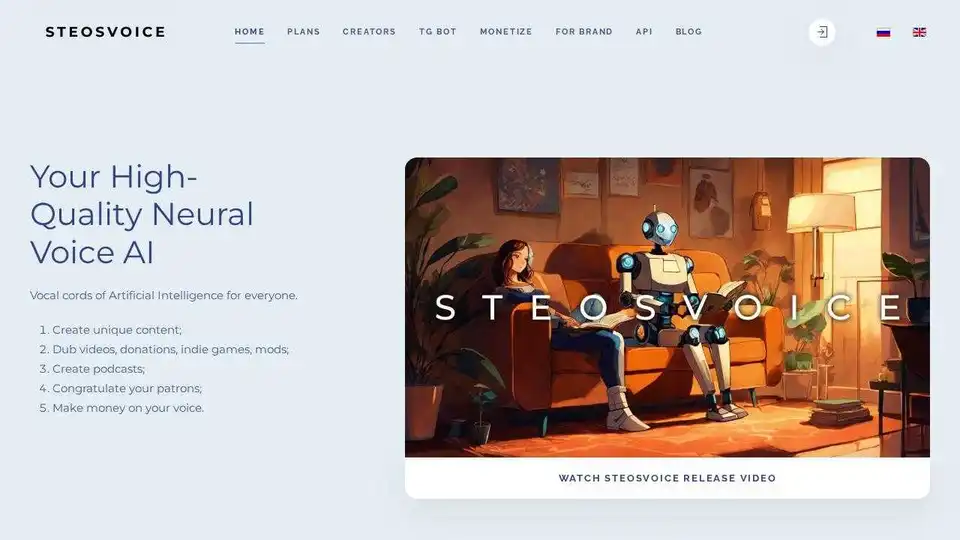
SteosVoice is an AI voice generator offering ultra-realistic speech synthesis for content creators. Dub videos, create podcasts, and monetize your voice with 800+ voices.
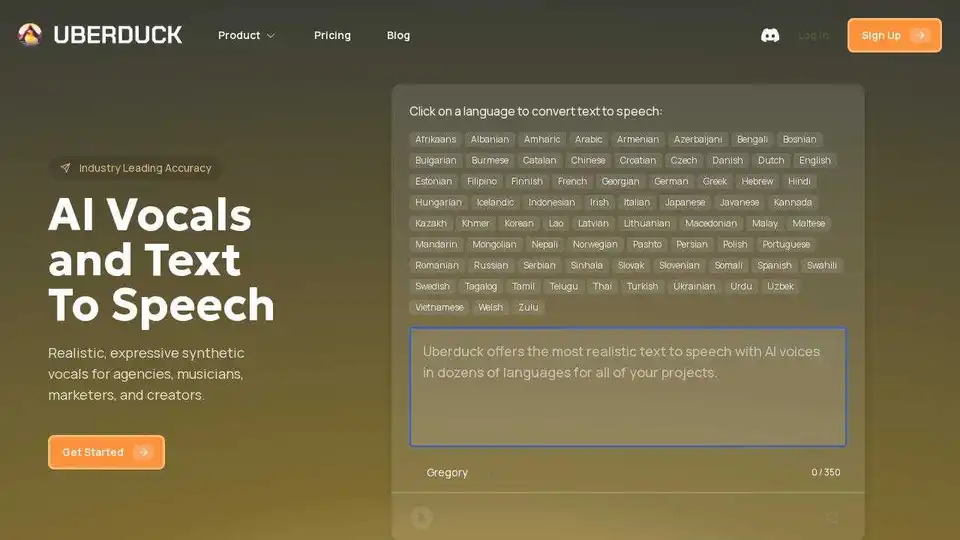
Make Music, Voiceovers and Videos With AI Vocals, Text to Speech, Voice Conversion and Voice Cloning.
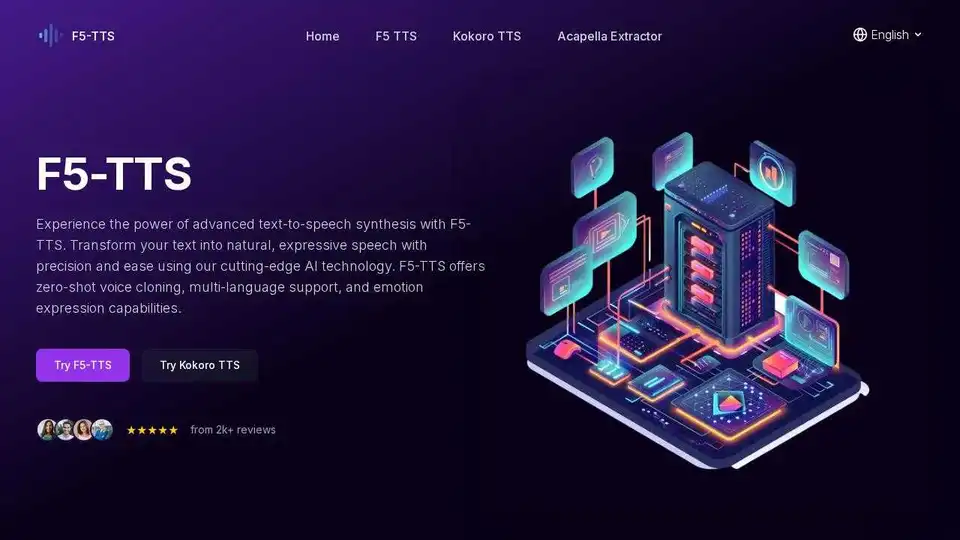
F5-TTS is a free online AI text-to-speech tool for generating natural speech from text with voice cloning, multi-language support, and emotion expression.
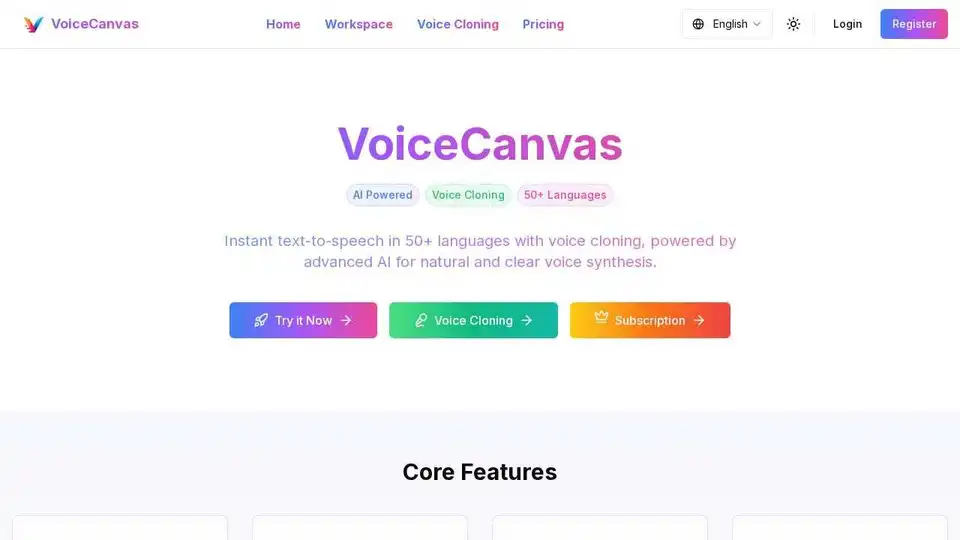
VoiceCanvas is an AI-powered platform for voice synthesis & cloning in 50+ languages. Create natural-sounding voices for story voiceovers, personalized voice cloning & more.
